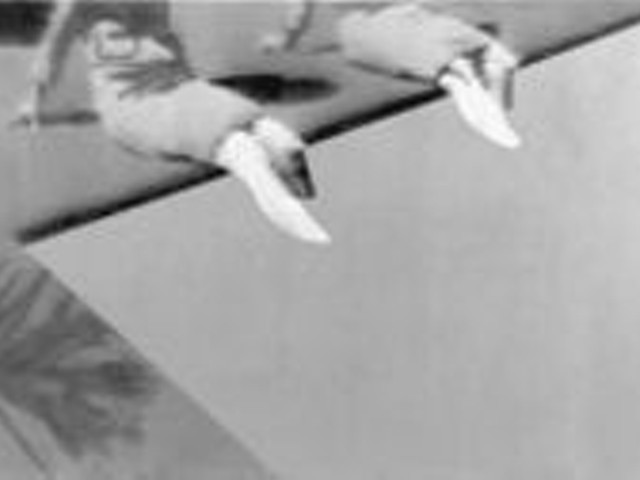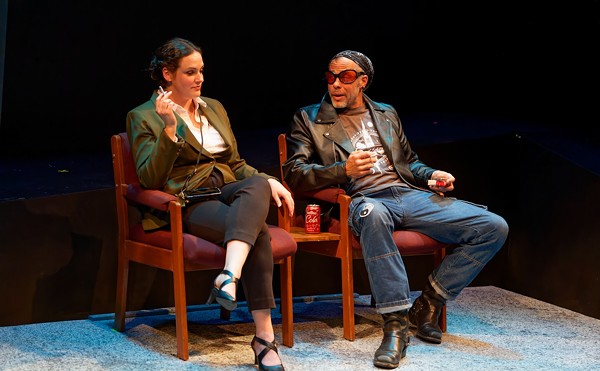This twenty-year-old script plays like a tribute to Mamet, Albee and Shepard, with a little bit of American Buffalo, a touch of Who's Afraid of Virginia Woolf? and a smattering of True West. There's rock & roll, tough talk, violence and mayonnaise; it's a testosterone-driven story fueled by fear and anger.
Produced by After Midnight, the show features real-life brothers Travis and Peter Hanrahan, directed by their father, Joe Hanrahan. For Joe, this might be a parenting dream come true -- not just working with his sons, but having them do what he says. How often does a parent get that? Rather than being an exercise in nepotism, the casting makes good dramatic sense: The physical resemblance between Travis and Peter gives an added dash of realism to the production, and knowing that they're really brothers makes the friction between the characters seem that much more real.
The play begins with a fearful Phillip awaiting his brother's return. Travis invests Phillip with quivering worry and just the right amount of adolescent awkwardness. Peter, playing older brother Treat, seems as if he might explode at any moment. His gestures lash out unexpectedly as he tries to mask his anxiety behind a tough man's swagger. Peter's performance is sometimes too big for the intimate space in which the play is performed; at times his gestures overpower his characterization, drawing attention to his acting technique rather than to the action of the play.
Treat supports himself and his brother through petty thefts but thinks he's struck gold when he brings home Harold, a drunken older man whose briefcase is full of valuable stocks and bonds. Larry Dell perfectly embodies the intriguing character of Harold, an orphan who is now rich through some sort of shady business dealings. Rather than escaping his so-called kidnappers, Harold makes himself at home, cooking corned beef and cabbage for Phillip and employing Treat to run small errands. He embraces the role of father for these two "dead-end" kids, trying to teach Treat lessons in moderation and self-control while giving Phillip the confidence to venture outside on his own.
Orphans is performed in the front room of the HH Studio in Maplewood. The space provides a true sense of the unpredictable outside world trying to intrude on the safely confined apartment of Treat and Phillip; pedestrians walking by the large windows glance curiously inside as the story unfolds. Unfortunately, the limited audience seating is all on the same level as the stage space, making it difficult to see if you're sitting anywhere but the front row. And while the two lighting instruments provide enough illumination to see the actors, they create odd shadows and a distracting sense of theatricality in a play that depends on the illusion of realism.
Not surprisingly, the brothers change positions of power at the end of the play. Travis shows us Phillip's newly discovered strength in subtle vocal and physical changes, but two aspects of the production mar the ending. Peter doesn't believably portray Treat's descent into despair -- it all happens to quickly. And the brothers' final bit of action, doing something on the floor, can't be seen by most of the audience.
When Chicago's Steppenwolf Theatre premiered Orphans, it was labeled a "bone-crunching" production. The current show may not be quite that athletic (with the audience practically in the actors' laps, that may be preferred), but it's still an energetic exploration of male bonding. To get the full effect of Kessler's powerful tale of brotherly love, get there early enough to sit in the front row. And ignore the gawkers at the window.





